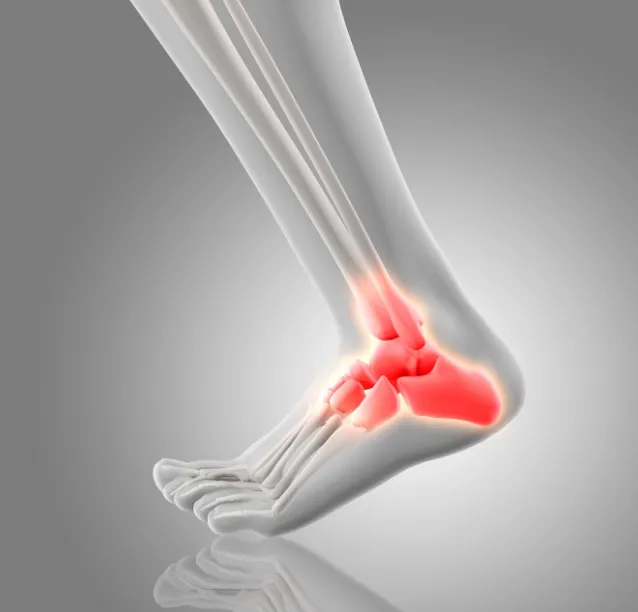Plantar Fasciitis
Plantar fasciitis is one of the leading causes of heel pain. It occurs when the thick band of tissue that supports the arch of your foot becomes irritated or inflamed. This tissue, called the plantar fascia, connects your heel bone to your toes and plays an important role in absorbing shock as you move.
Many people with this condition notice their heel pain is sharpest first thing in the morning when taking their first steps out of bed. It may also flare up after long periods of standing or when rising after sitting. Interestingly, the discomfort is often worse after activity, rather than during exercise itself.
Who Is at Risk?
Plantar fasciitis can develop in anyone, but certain factors can increase the likelihood:
Age: Most common between ages 40–60.
Foot structure: Flat feet, high arches, or unusual walking patterns can place extra strain on the plantar fascia.
Excess weight: Carrying extra pounds increases stress on the feet.
Work environment: Jobs that require standing or walking on hard surfaces for long hours—such as nursing, teaching, or factory work—can lead to overuse and irritation.


A Natural Approach to Relief
Chiropractic care can be an effective, non‑invasive way to support healing. By gently adjusting the joints of the feet, ankles, knees, hips, and spine, we can help restore proper alignment and function, reducing strain on the plantar fascia and encouraging recovery.
Frequently Asked Questions
Can orthotics or special inserts help?
Yes. In some cases, supportive shoe inserts can reduce strain and complement chiropractic care.
Will plantar fasciitis eventually go away?
It can improve over time, but without addressing the underlying cause, symptoms often return. Early care can shorten recovery time.
Book an Appointment
If heel pain is slowing you down, we’re here to help.
Plantar Fasciitis

Plantar fasciitis is one of the leading causes of heel pain. It occurs when the thick band of tissue that supports the arch of your foot becomes irritated or inflamed. This tissue, called the plantar fascia, connects your heel bone to your toes and plays an important role in absorbing shock as you move.
Many people with this condition notice their heel pain is sharpest first thing in the morning when taking their first steps out of bed. It may also flare up after long periods of standing or when rising after sitting. Interestingly, the discomfort is often worse after activity, rather than during exercise itself.
Who Is at Risk?
Plantar fasciitis can develop in anyone, but certain factors can increase the likelihood:
Age: Most common between ages 40–60.
Foot structure: Flat feet, high arches, or unusual walking patterns can place extra strain on the plantar fascia.
Excess weight: Carrying extra pounds increases stress on the feet.
Work environment: Jobs that require standing or walking on hard surfaces for long hours—such as nursing, teaching, or factory work—can lead to overuse and irritation.

A Natural Approach to Relief
Chiropractic care can be an effective, non‑invasive way to support healing. By gently adjusting the joints of the feet, ankles, knees, hips, and spine, we can help restore proper alignment and function, reducing strain on the plantar fascia and encouraging recovery.
Frequently Asked Questions
Can orthotics or special inserts help?
Yes. In some cases, supportive shoe inserts can reduce strain and complement chiropractic care.
Will plantar fasciitis eventually go away?
It can improve over time, but without addressing the underlying cause, symptoms often return. Early care can shorten recovery time.

